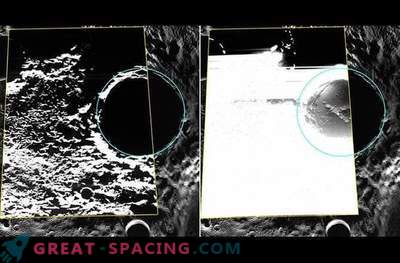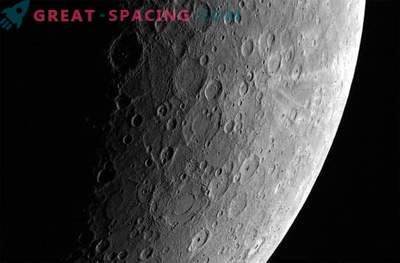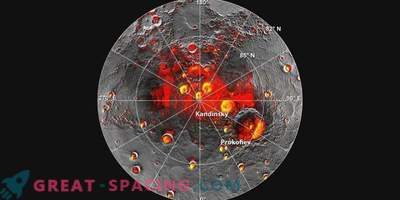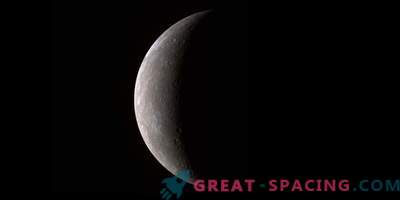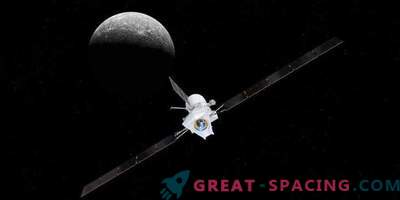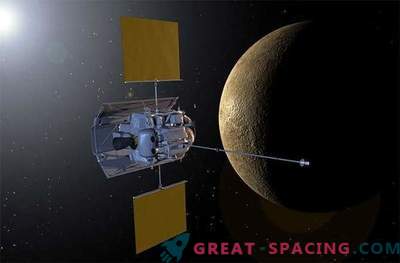
The planet inside the solar system is as barren as it is often depicted. Recently, scientists have discovered a “big valley” on a small planet. Grand Canyon compared to her - baby. It also has one of the largest impact basins in the solar system. In addition, there is water ice and organic chemistry on Mercury. MESSENGER (Mercury Surface, Space Environment, Geochemistry and Ranging - surface of Mercury, space environment, geochemistry and ranking) spent almost 10 years studying the planet in both spans and orbital observations. He was able to detect several strange features that challenge our understanding of the planet. Here are some of the latest results.
“Big Valley”

When probing data from MESSENGER, scientists discovered a “large valley” on Mercury, which far exceeds the size of the Grand Canyon. It was probably formed at the time of compression of the solid lithospheric plate (crust) 3-4 billion years ago, when the planet shrank during cooling. 250 miles wide and 600 miles long, it is two times deeper than the terrestrial canyon. If you put it on Earth, then it would take a distance from Washington, DC to New York (to Detroit).
The problem is that this finding contradicts other results. There are still places on the planet that demonstrate volcanism, not to mention the fact that Mercury has a magnetic field (which means that there must be something inside it that generates it). “Everyone thought that Mercury was a very cold planet. I thought too. But it seems that the planet could have significantly warmed up over a recent period, ”says co-author Laurent Montesy, assistant professor of geology at the University of Maryland. (The study was conducted under the direction of the National Museum of Aviation and Cosmonautics by Thomas Watters).
Volcanic Pool

The Caloris Basin is one of the largest known shock sites in the Solar System. It was discovered in 1974, when Mariner 10 flew past Mercury. But they covered only half of its area. When MESSENGER first flew to the planet, he was able to see the pool in all its glory. And subsequent observations have shown that it probably has a volcanic history.
Looking at the area, the scientists saw the remains of past lava flows, as if from a blow (cut a pool about 1500 km or 932 miles wide), as well as from volcanic vents that are believed to surround the perimeter. Lava covering takes as much as 3.5 km (2.2 miles) in thickness.
Active Planet

During the last year and half of the MESSENGER missions, the spacecraft managed to fly closer and examine the surface of Mercury in fine detail. At the zero mark there are small fracture benches, which should be young, because they had a lot of craters that were not worn out over time. It is believed that these ledges slowly formed as the bark bent and rose.
“The young age of small ledges suggests that Mercury joins the Earth as a tectonically active planet with new faults that form the current interior of Mercury, which continues to cool,” said lead author Tom Watters in a statement.
Water Ice

Using radar observations from the Earth, MESSENGER confirmed the probable reserves of polar ice on Mercury. There were three lines of evidence that NASA reported in 2012: an excess of hydrogen (a sign of water), the reflectivity of polar deposits, and field temperature models. “Neutron data shows that Mercury’s bright polar deposits have a hydrogen-rich layer more than 10 cm thick under the top layer (10–20 cm) that is less saturated with hydrogen,” said David Lawrence, a researcher at the laboratory of applied physics at Johns Hopkins University and the lead the author of one of the works describing the finds. - “The buried layer contains hydrogen corresponding to almost pure water ice.”
Organic compounds

Scientists noticed something else during the inspection of the ice. During the discovery of bright deposits in cold areas, darker material was found in several warm zones. Scientists suggest that it is organic, which is scattered around the planet after strikes from small objects (asteroids and comets). It is likely that this is how the water arrived at Mercury.
Organic compounds are considered the building blocks of life, although they are not mandatory signs of life itself. They were found on Mars and Titan, as well as on the moon of Saturn with a liquid cycle and “pre-biotic” chemistry. This chemistry, prior chemistry, which creates and supports life.
